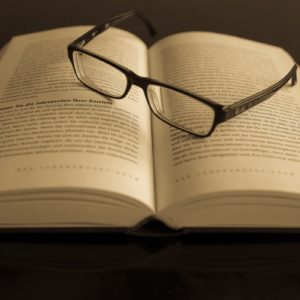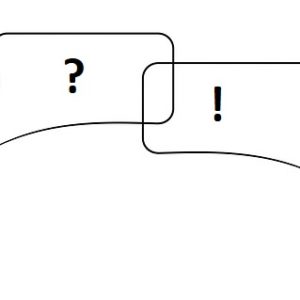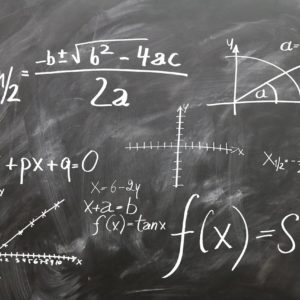How to write efficiently
Introduction
Writing well is probably one of the most important skills that someone can acquire. It allows you to structure your thoughts, better understand yourself and better communicate with others. A well written motivation letter can land you a job and a good email can lead you to a promotion. There are many other reasons to write of course, to teach, to understand, to share, to think, …
However, writing is hard and what’s worse is that like reading we stop learning to write at a beginner level. Hence, most people have barely acquired the skills to write well. For me it is only during my PhD that I would realize this deficiency and start to learn again.
Beginner level writers write as they think. What makes a good writer however is how active they are when writing. Which word to use? How to start a text or a sentence? In what order should ideas be presented? …
In this article I wish to share with you what I’ve learned about writing. Most of the material we will cover here comes from the book “Writing for science” by Joshua Schimel. While this book is aimed at scientists, it provides many of the basics that are essential for any kind of text.
Audience
Before you write anything, you have to know who you are writing for. Is it for one particular person, for vous, a small group or a large audience? Indeed, your audience dictates your writing. Being too technical with your manager or too superficial with your professor might cause you some problems. If you write for a scientific journal, chances are you don’t need to re-explain linear algebra; potential readers should know already. Hence, you have to have an idea of what your audience knows in order to write efficiently but also use the right vocabulary.
Structure
Every piece of writing presents a narrative. From fictional stories to scientific articles, a good structure is essential. One way to structure a story is with an Opening, a Challenge, an Action, and a Resolution; this is the OCAR structure. The opening defines the characters and concepts. This article is about writing so I started discussing what it is and why its important. The challenge provides the reason for the story : writing is hard, poorly taught and I wish to share what I’ve learned. The action proposes a solution or a reflection about the challenge, here I’m trying to share my knowledge of writing. Finally, the resolution concludes by condensing what was discussed through the article and putting it into perspective.
However, OCAR is not the only structure that exists. It is a slow structure taking its time to develop; it is well suited for science articles. However, journalists write using an LD structure because most of their readers don’t read until the end. Hence, the LD structure condenses the opening, challenge,and resolution in the first paragraph; also called the lead paragraph. The goal is to provide the most important information first and then additional details afterwards.
Furthermore, these structures are not limited to the entire text. The sections, paragraphs and even sentences will have a specific structure; be it OCAR, LD or other. In particular, the first sentence of a paragraph is called the topic sentence and tends to describe what the paragraph is about. It should help a quick reader decide if a paragraph should be skipped or read. Sentences themselves are more limited due to their size but they can still vary greatly in structure.
When writing, it is also important to understand what is a paragraph and a sentence. When should one start and stop. Each sentence/paragraph/article is ideally about one idea. This article is about how to write. The last paragraph was about the structure of sections, paragraphs and sentences. The previous sentence was about providing an example relating to the topic of this paragraph. One thing is true across articles, paragraphs and sentences : they should be self-contained and atomic.
Flow
Paragraphs, sentences and words should also flow nicely together. The end of one should serve for the start of the other. Hence, you should avoid sentences or paragraphs that do not play along with its neighbours. Writing with a good flow makes it easier for the reader to stay interested while bad flow drains the energy of the reader.
A good flow can be achieved easily with connecting words such as “hence” and “however”. Nonetheless, general flow is best achieved when the object (or a part of it) of a sentence becomes the subject of the next. This ensures that ideas flow from one to the next and provides a sense of progression. Consequently, a text that flows well is easier to read.
A story that sticks
Writing well is good, writing so that people remember what you were trying to communicate is better. According to Joshua a story that sticks requires six criteria. It must be simple, unexpected, emotional, concrete, credible, and should build up on itself.
Simple does not mean simplistic but you should avoid complicated phrasing or words. One of the biggest signs of someone who doesn’t know how to write is when they try too hard to impress the reader with complex sentences or words. That is not to say that such things are useless but they are hard to craft and should be used parsimoniously.
Unexpected : your text should provide something new and interesting. This ties with the emotional criteria, your text should bring something to the reader. Ask yourself, is there an audience for this? Is this interesting? For me the goal of this article is to show you aspects of writing you might not have thought about.
Your story should also be credible and concrete. Give examples, preferably real ones. Giving examples will get your ideas back down to earth and make it easier to understand. Not everyone is an abstract thinker and generally people will appreciate examples to refer to. Also don’t hesitate to use images whenever possible because humans are mostly visual creatures and images can hook the reader into understanding the text better.
Finally, your text should build up on itself; for example this article is written in the order of the writing process. First, think about the audience, then the structure. Next, as you write you want to create flow and then make your story sticky. Finally, we will discuss the editing process. Hence, we have a coherent story with a logical start and end.
Editing and proofreading
The final and biggest step to writing is editing. Writing efficiently is also about writing less. In other words, a big part of editing is removing unnecessary text. A quote whose author was lost to time says “If I had more time, I would have written a shorter letter.” The idea is that writing clearly and concisely is requires a lot of time.
Editing is arguably the most difficult part of writing because it requires self-criticism but also the ability to put oneself in the shoes of a potential reader. Is everything clear in what you’ve written? Is everything there? Have you cited all of your sources? Does this flow well? …
However, it’s often difficult to separate yourself from your work as we are often blind to our own mistakes. Hence, sometimes it is best to ask someone else to read and critique your text. However, other techniques exist to force yourself to see better. For example, I like to print texts; I find that going from a digital to a physical format changes the way I approach the text.
Another example : for this blog, I write in French and English. I realized that when translating from English to French I often end up improving both versions of the text. I think that changing the language forces me to see the text from another angle. However, applying this method can be time consuming if one does not need a bilingual version of a text.
Conclusion
Writing well is hard but I believe that there is no better way of thinking than with writing. The ability to take your thoughts out of your head and structure it in text allows you to better structure and improve your opinions and understanding of things. Finally, PRACTICE is key. To write well you need to write often and actively improve. If you’d love to start writing the best of time is always now, so get to it 😉
- Why non linearity matter in Artificial Neural Networks - 18 June 2024
- Is this GPT? Why Detecting AI-Generated Text is a Challenge - 7 May 2024
- The Transformer Revolution: How AI was democratized - 21 February 2024



